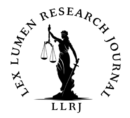Written by Smriti Anshu,
Intern-Lex Lumen Research Journal,
June 2025
Introduction
At a time when technology continues to drive perception, the distinction between truth and falsehood is perilously thin. The most disturbing of technological advances in recent years has been the emergence of deepfakes—hyper-realistic artificial media created using artificial intelligence (AI), regularly indistinguishable from real material. These faked videos and audio recordings are not only weapons of satire or entertainment but have turned into powerful weapons of disinformation, deception, harassment, and political sabotage. In India—a country of more than 800 million online users—this is more than digital; it is intimate and legally nuanced. Such as a faked video of a politician admitting to corruption. A spurious intimate clip shared without a woman’s permission. A faked interview of a CEO causing stocks to plummet. What links these situations is the insidious and silent application of deepfakes—AI-created audio-visual footage that duplicates reality with almost flawless precision.
Although deepfakes find some artistic applications in filmmaking and teaching, their ill use for impersonation, propaganda, and harassment create severe threats to individual rights, public confidence, and judicial integrity. In India, where misinformation has already led to mob violence and election disinformation, the extent of the damage can be unimaginable.
This blog explores whether Indian legislation is capable of countering this changing threat. Are existing statutory provisions sufficient to guard citizens against the psychological, reputational, and economic harm caused by deepfakes? Or is a change in the law a necessity?
Understanding Deepfakes: A Technological Threat
Deepfakes employ deep learning, specifically generative adversarial networks (GANs), to place on top of source media pre-existing images, videos, or audio. Originally designed for harmless purposes such as dubbing and special effects, they are now exploited to create pseudonymous pornographic videos of celebrities and ordinary people as well as propagate false political speeches and forged evidence in legal cases.1
What is particularly dangerous about deepfakes is their ability to destabilize trust in digital authenticity. The very basis of digital evidence, media coverage, and online expression hangs in the balance.
Indian Legal Framework: Piecing the Puzzle
India currently does not possess any legislation specifically that tackles the problem of deepfakes. Yet, victims of deepfake-related crimes can receive partial relief under several laws that are already in place.
Information Technology Act, 2000 (IT Act)
India’s core cyber law legislation, the Information Technology Act, has applicable provisions:
Section 66E: Penalizes breach of privacy by capturing or transmitting pictures of private parts in absentia.2
Section 67 and 67A: Criminalize publishing or transmitting obscene or sexually explicit content in electronic form—traditionally applied to deepfake pornography.3
Section 66D: Penalizes cheating by personation through computer facilities—a section which may extend to impersonation through deepfake material.4
Nevertheless, these provisions tend to be reactive and based on particular types of harm such as obscenity, cheating, or invasion of privacy. They do not specify or acknowledge deepfakes as an independent offense.
2. Indian Penal Code, 1860 (IPC)
The IPC also has some provisions which can be resorted to:
Section 500: Defamation, where reputational damage is inflicted.5
Section 465 and 469: Forgery and intending to damage reputation through forged documents or electronic records.6
Section 509: Words or behaviour meant to outrage the modesty of a woman—useful in cases involving nonconsensual deepfake pornography.7
However, the lack of a specialized definition or acknowledgment of deepfakes by law implies such charges tend to need innovative interpretation and have differing judicial acceptability.
3. Right to Privacy & Civil Remedies
The Supreme Court in Justice K.S. Puttaswamy v. Union of India identified the right to privacy as a fundamental right under Article 21 of the Constitution.8 Deepfakes, particularly those with sexual content or disinformation, are an open flouting of this right.
The victims may also seek relief in civil courts based on tort law for damages owing to mental trauma, loss of reputation, or mental harassment.
Case Law Focus: Judicial Interpretation and Deepfakes
Though India hasn’t seen a milestone judgment based on deepfakes as of yet, the treatment of morphed pictures and digital impersonation suggests that the judiciary is ready to evolve.
In State of West Bengal v. Animesh Boxi, the accused person was held guilty under Sections 354A and 509 IPC and Section 66E of the IT Act for sharing a morphed intimate video of a woman.9 The court highlighted the irreparable harm such content inflicts on the dignity of women and the imperative need for regulatory actions.
This case establishes the significance of consent and genuineness in digital media and can be read as a precursor to future deepfake-related litigation.
Global Legal Reactions: A Comparative Perspective
India is not singular in dealing with deepfakes. Countries around the world are fighting to enact laws against them:
United States: The DEEPFAKES Accountability Act (bill) and a number of state laws criminalize artificial media employed to injure or deceive.
China: Demands deepfake material to have an obvious statement of its artificial nature under the 2022 rules.10
European Union: The planned AI Act classifies deepfakes as high-risk and imposes transparency requirements for creators.11
India can learn from incorporating aspects of these legislations, including obligatory watermarking, consentbased use, and traceable metadata.
Psychological and Social Implications
Apart from legal meanings, deepfakes have serious psychological impacts. Deepfake pornography victims experience anxiety, depression, and isolation, particularly when the content goes viral. Political deepfakes can influence the population and create mistrust of democratic institutions.
Psychologist Elizabeth Loftus records the way false memories can be implanted by constructing counterfeit media, thereby pointing to the vulnerability of the mind exploited by deepfakes.12 In India’s volatile social environment, where communal frictions or political discourse can be set ablaze with ease, the uncontrolled dissemination of deepfakes can culminate in real-world violence as well as reputational loss.
Towards Reform: The Way Ahead
Whilst current legislation provides partial redress, the lack of a specific statute denotes a legislative vacuum. A complete legal regime for deepfakes should encompass:
Definition of Deepfakes: Legally defining deepfakes like phishing or identity theft.
Criminalization: Tiered punishment according to harm—ranging from impersonation and defamation to sexual exploitation.
Consent-based Usage: Mandatory express consent for reproducing one’s face, voice, or likeness.
Technological Cooperation: Compelling platforms (YouTube, Instagram, WhatsApp) by law to identify and remove deepfakes within specified time limits.
Public Awareness and Education: Encouraging media literacy to identify and report deepfakes. Conclusion
Deepfakes occupy the crossroads of technology, psychology, and law, calling for an inter-disciplinary reaction. Indian laws—though ingenious in some situations—are as of now more reactionary in nature. An integrated, victim-oriented legal strategy is needed to tackle the fast-rising evil of digital deception.
To safeguard our online selves, legal recognition has to catch up with technological innovation. India, with its vast digital population, cannot wait. The truth, with the advent of AI, requires law as well as logic to combat deception.
Footnotes
Chesney, Robert & Citron, Danielle Keats, Deep Fakes: A Looming Challenge for Privacy, Democracy, and National Security, 107 Cal. L. Rev. 1753 (2019).
The Information Technology Act, No. 21 of 2000, § 66E, India Code (2000). ↩
§ 67, 67A. ↩
§ 66D. ↩
Indian Penal Code, 1860, § 500, No. 45, Acts of Parliament, 1860 (India). ↩
§ 465, § 469. ↩
§ 509. ↩
Justice K.S. Puttaswamy v. Union of India, (2017) 10 SCC 1. ↩
State of West Bengal v. Animesh Boxi, (2018) Cr LJ 3107 (Cal). ↩
Administrative Provisions on Deep Synthesis for Internet Information Service (China, 2022). 11. European Commission, Proposal for a Regulation Laying Down Harmonised Rules on Artificial Intelligence (Artificial Intelligence Act), COM/2021/206. 12. Loftus, Elizabeth F., Creating False Memories, Sci. Am. (1997).


